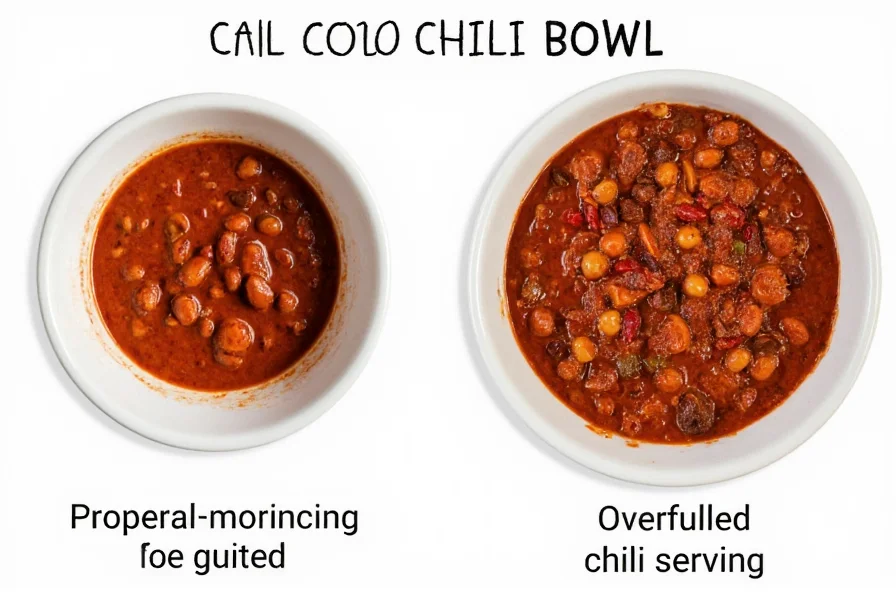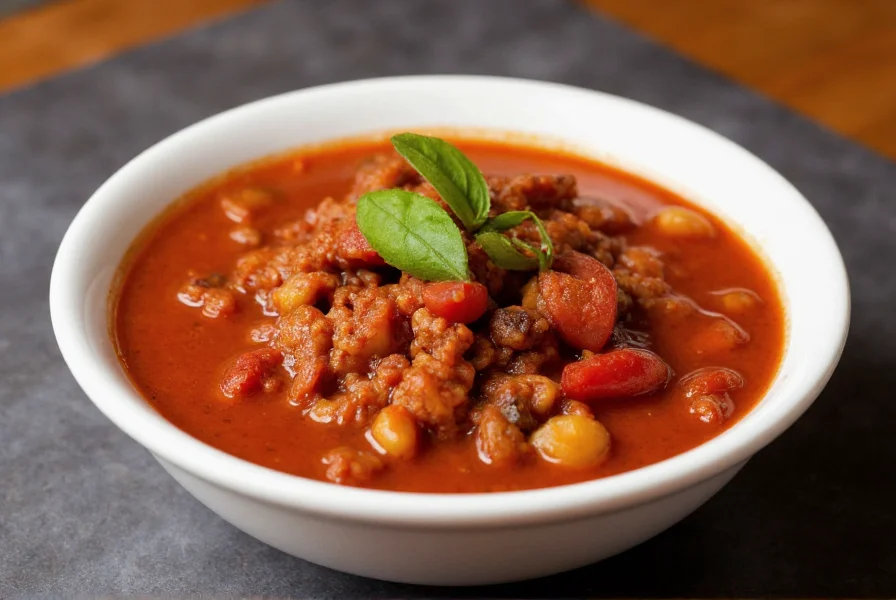What Makes a Proper Bowl of Chili
When serving chili, the right portion size and presentation significantly impact the dining experience. A well-constructed bowl of chili isn't just about the recipe—it's about proper serving techniques that enhance flavor and satisfaction. Understanding the components of an ideal serving helps both home cooks and restaurant staff deliver authentic chili experiences.
Standard Portion Size Guidelines
The traditional serving size for a bowl of chili ranges from 8 to 12 ounces (1 to 1.5 cups), depending on whether it's served as an appetizer, main course, or part of a larger meal. This measurement provides enough substance to feel satisfying without causing flavor fatigue.
| Serving Context | Recommended Portion | Bowl Size |
|---|---|---|
| Main course | 10-12 oz (1.25-1.5 cups) | 12-16 oz capacity |
| Appetizer or side | 6-8 oz (0.75-1 cup) | 8-10 oz capacity |
| Festival or competition | 4-6 oz (0.5-0.75 cups) | 6-8 oz tasting cup |
Essential Bowl Characteristics
The vessel matters as much as the chili itself. Traditional chili bowls feature:
- Wide rim—provides space for toppings without mixing them prematurely
- Deep curvature—retains heat while preventing spills
- Thick ceramic construction—maintains temperature throughout consumption
- 6-8 inch diameter—optimal for standard portion sizes
Many restaurants use pre-heated bowls to maintain chili temperature, especially important for thicker, meat-based varieties that cool faster than bean-centric versions.

Traditional Toppings and Their Placement
The arrangement of toppings defines an authentic bowl of chili experience. Rather than mixing everything in advance, proper presentation separates complementary elements:
- Cheese—sprinkled in a ring around the outer edge (never covering the entire surface)
- Sour cream—placed in dollops rather than stirred in
- Onions—finely diced white onions arranged in a crescent
- Beans—when served as a side, placed in a small separate container
This presentation allows diners to customize each bite while maintaining the integrity of the chili's original flavor profile. The "bowl of chili with beans" variation remains controversial in traditional circles, with purists arguing beans dilute the meat-forward flavor.
Regional Serving Variations
Chili serving traditions differ significantly across regions:
- Texas style—served in a deep bowl with minimal toppings, often with a side of crackers rather than cornbread
- Cincinnati style—presented with a generous topping of shredded cheddar and oyster crackers
- Midwest style—typically includes kidney beans and is served with cornbread on the side
- California style—often features avocado and cilantro as standard toppings
Understanding these regional differences helps when preparing chili for diverse audiences or when traveling to experience authentic local variations.
Common Serving Mistakes to Avoid
Even excellent chili can be ruined by improper presentation. Watch for these common errors:
- Overfilling the bowl—leaves no room for toppings and causes spills
- Mixing toppings in advance—prevents customization and alters texture
- Using inappropriate vessels—soup bowls lack the necessary depth and width
- Serving cold chili—always pre-heat bowls for optimal temperature retention
- Ignoring portion control—excessive servings diminish the chili's complex flavors

Perfecting Your Bowl of Chili Presentation
For home cooks and professional chefs alike, mastering the art of chili presentation elevates a simple meal to a memorable experience. Start with quality chili—whether it's a traditional meat-based recipe, a vegetarian three-bean version, or a white chicken chili. Then focus on proper portioning and thoughtful topping arrangement.
Consider your audience when determining the ideal bowl of chili size. For family dinners, slightly larger portions work well, while entertaining guests might call for more precise measurements. When serving chili at events, provide tasting-sized portions (4-6 ounces) that allow people to sample without commitment.
The perfect bowl of chili balances substance and presentation, creating an experience where each element—from the vessel to the toppings—enhances rather than competes with the main dish. By following these guidelines for portion size, bowl selection, and topping arrangement, you'll serve chili that satisfies both the palate and the eye.
Frequently Asked Questions
How many ounces is a standard bowl of chili?
A standard bowl of chili contains 8-12 ounces (1 to 1.5 cups) when served as a main course. Appetizer portions typically range from 6-8 ounces, while festival or competition samples are often 4-6 ounces.
What size bowl should I use for serving chili?
Use a 12-16 ounce capacity bowl for main course portions. The ideal chili bowl has a 6-8 inch diameter with a wide rim and deep curvature to retain heat while providing space for toppings. Ceramic bowls work best as they maintain temperature throughout the meal.
Should beans be in a traditional bowl of chili?
Traditional Texas-style chili does not include beans, focusing instead on meat and spices. However, many regional variations incorporate beans. If serving beans with chili, present them in a separate container rather than mixing them directly into the chili bowl.
How do I keep chili hot in the bowl?
Pre-heat your bowls by filling them with hot water for 1-2 minutes before draining and adding chili. Use thick ceramic bowls which retain heat better than thin porcelain or metal. For extended serving times, consider using insulated bowl stands or warming trays.
What are the essential toppings for a proper bowl of chili?
Traditional toppings include shredded cheddar cheese arranged around the rim, dollops of sour cream, and finely diced white onions. Additional popular options include oyster crackers, jalapeños, cilantro, and avocado (for non-traditional variations). Always serve toppings separately to allow customization.











 浙公网安备
33010002000092号
浙公网安备
33010002000092号 浙B2-20120091-4
浙B2-20120091-4